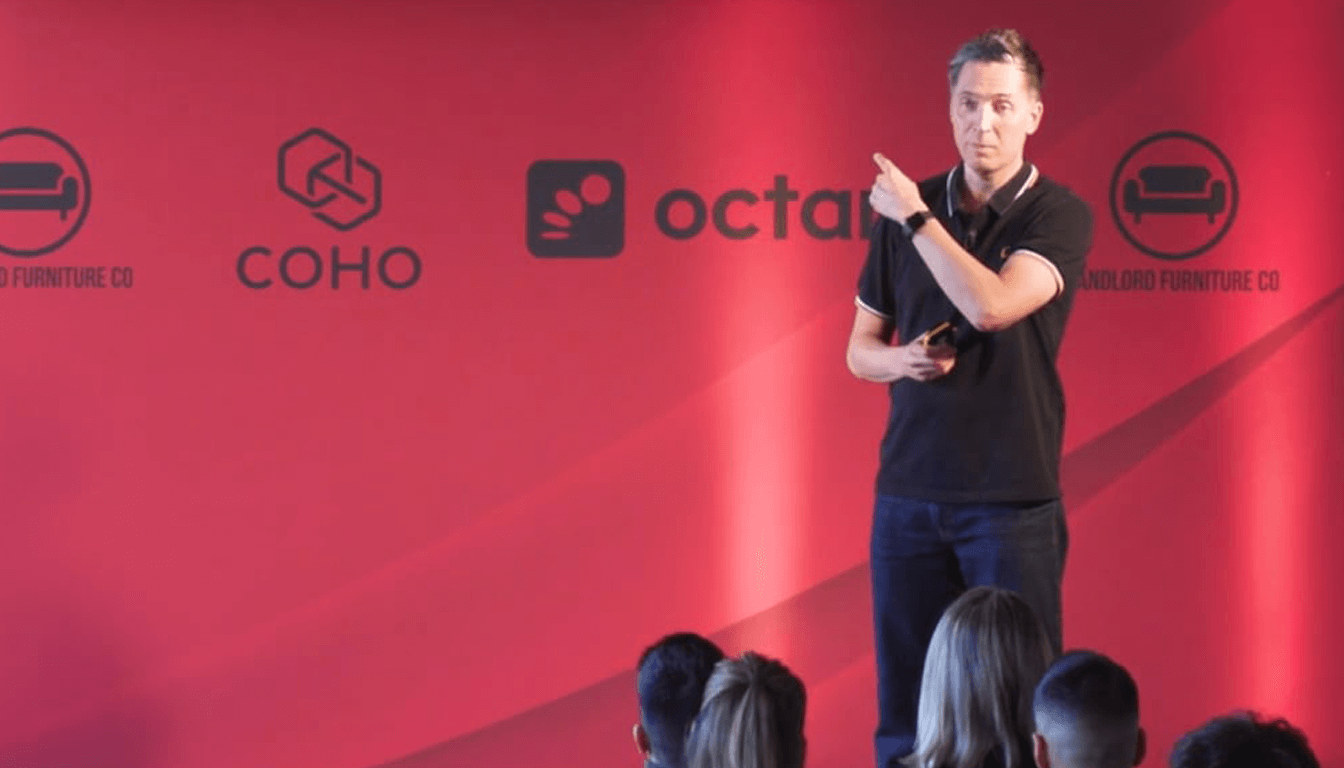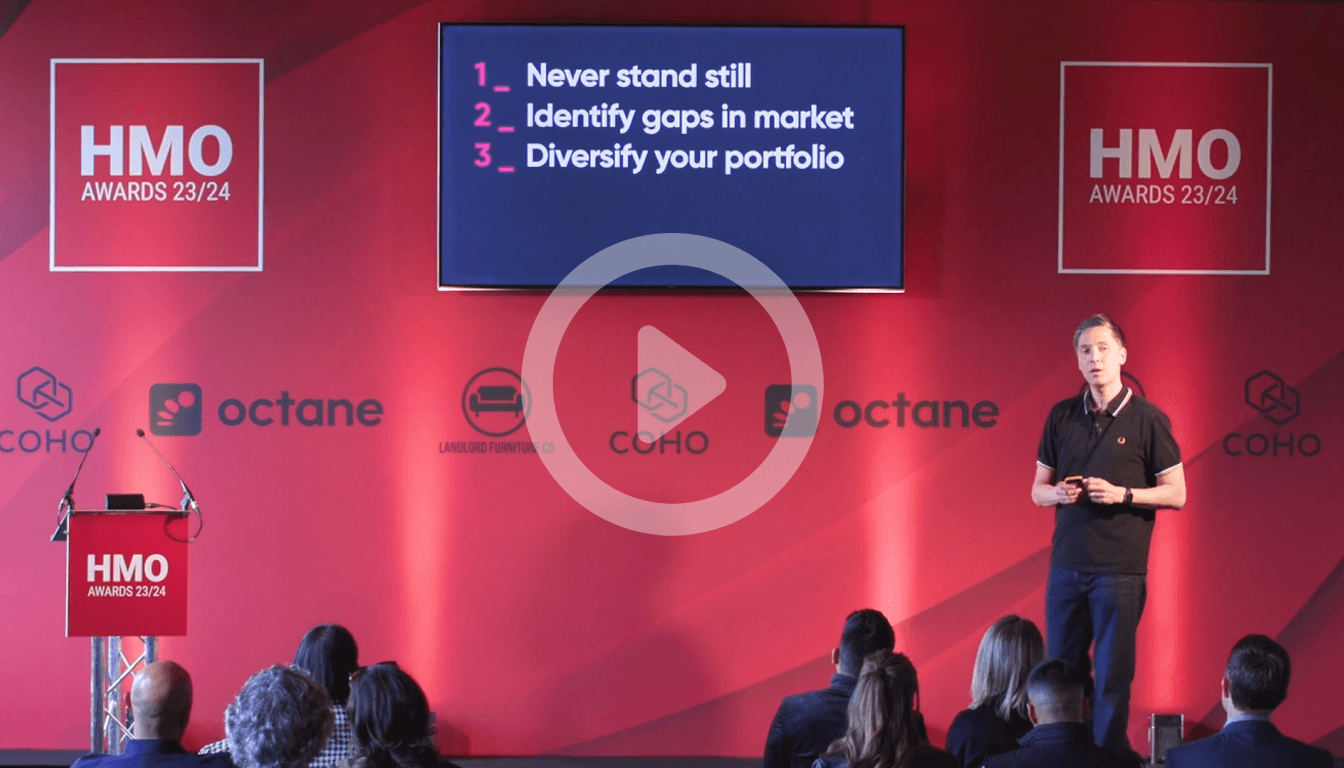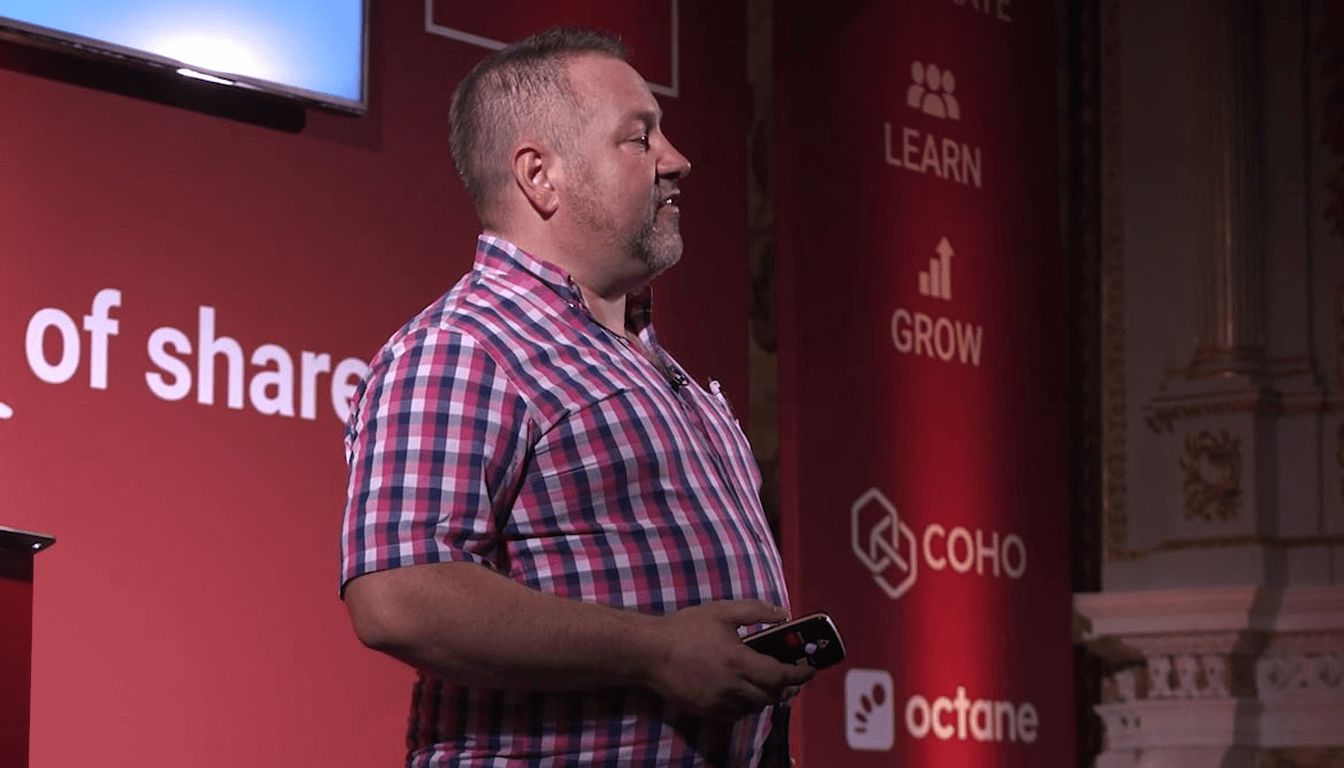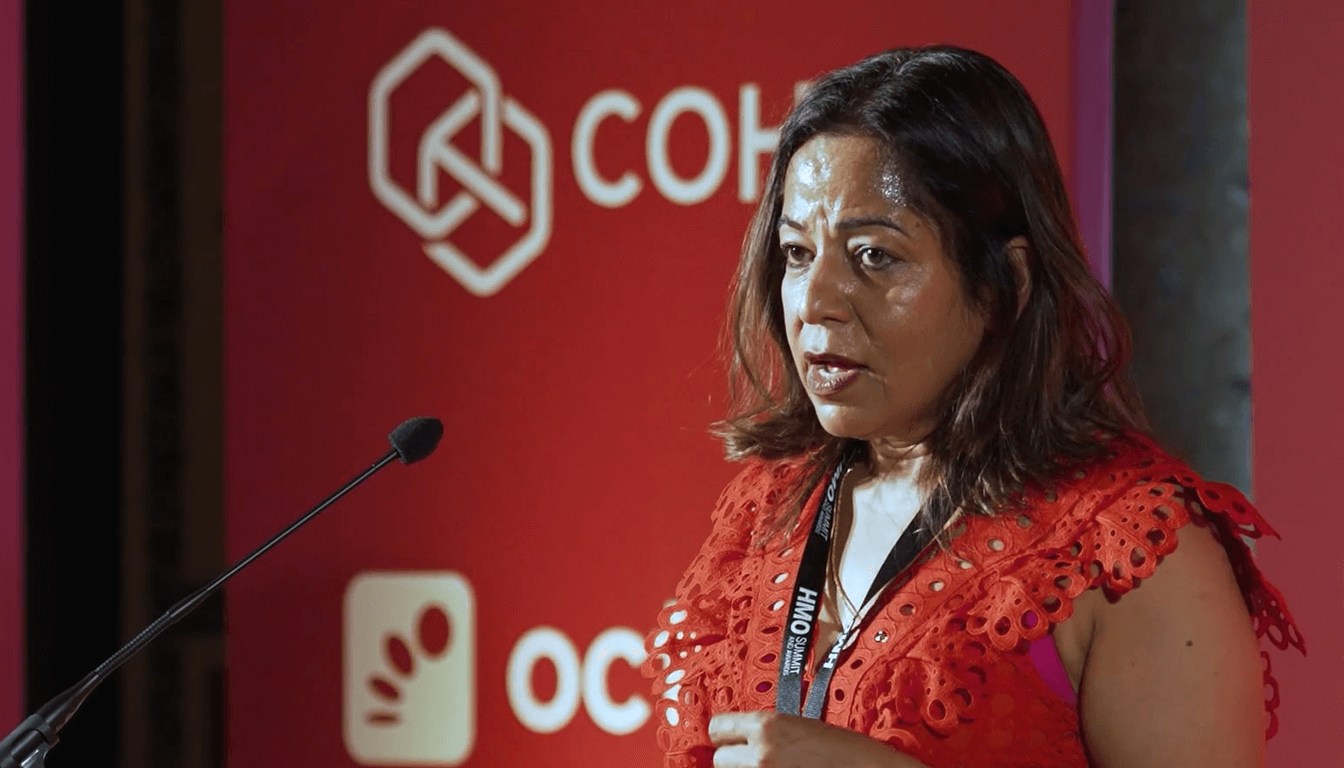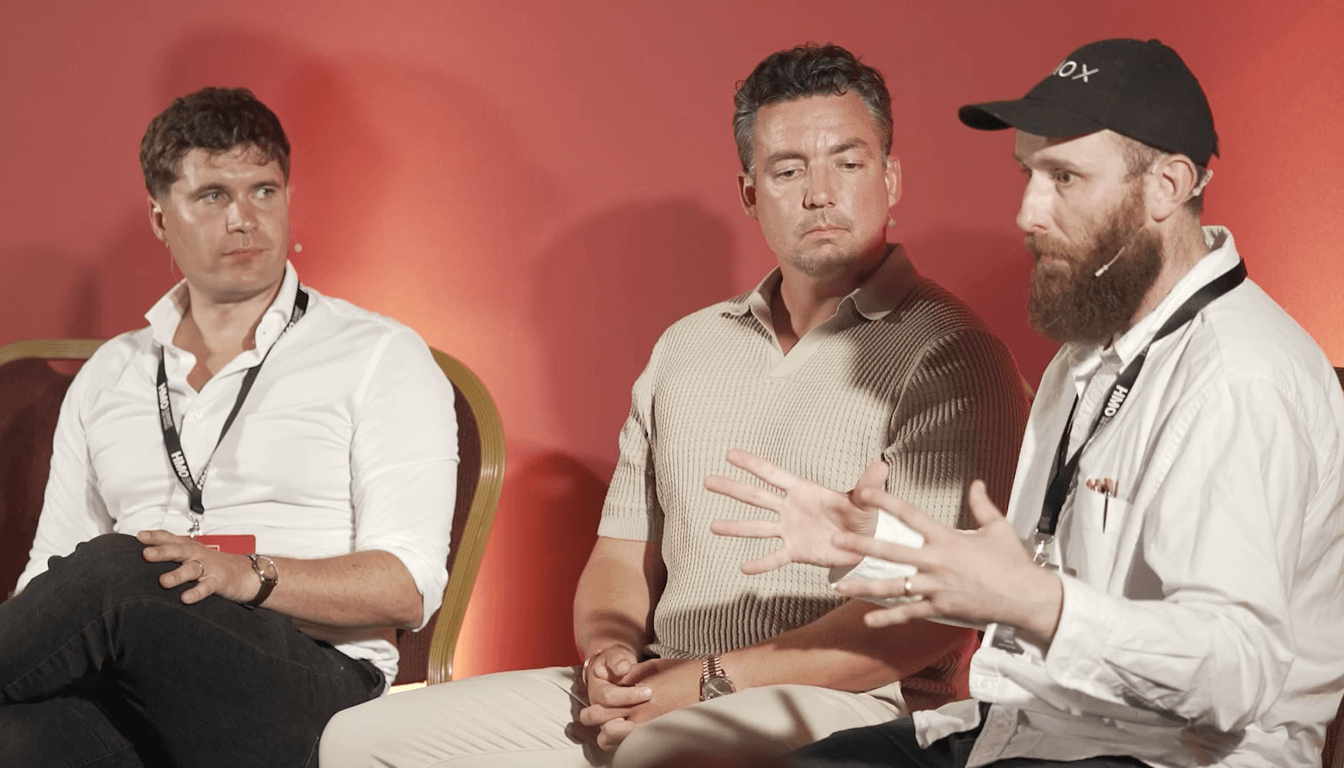Insights from Stuart Scott, Founder of Co-Living Revolution
The HMO (House in Multiple Occupation) landscape is rapidly evolving, and as competition heats up, innovation is no longer optional—it’s essential. At the 2023–24 HMO Summit, Stuart Scott, founder of Co-Living Revolution and a serial property innovator, laid out five powerful strategies to help developers and designers maintain a competitive edge, attract better tenants, and future-proof their portfolios.
This blog distills those strategies into a unified narrative for landlords, developers, and co-living entrepreneurs looking to raise the bar.
The Market Reality: Competition and Expectations Are Rising
In cities like Portsmouth, Bristol, and Brighton—where the HMO market feels saturated—Scott reminds us: it’s not oversupply that’s the problem, but underperformance. Most stock in these areas is substandard. The real threat isn’t the quantity of HMOs—it’s the rapidly rising tenant expectations and the growing number of landlords delivering better-designed homes.
“You can’t afford to stand still,” Scott says. “The moment you do, you’ll be outpaced.”
This is where innovation becomes critical—not just in how you design your rooms, but in how you think, plan, and evolve your developer toolkit.
1. Never Stand Still: Innovation as Your Competitive Edge
The first rule of modern property development: what worked yesterday won’t win tomorrow.
Scott highlights how many developers build a portfolio and then stop evolving. Over time, others enter the market with fresher designs, smarter layouts, and better tech—leaving the original investors struggling with voids and stale products.
History is littered with businesses that refused to innovate—Blockbuster, Kodak, Blackberry—and landlords are not immune.
In real estate, every year should be an opportunity to refine and raise the bar. Whether you’re converting terraced houses, semi-commercial units, or doing full-scale Sui Generis conversions, your edge comes from what you do next—not what you did last.
2. Find the Gap: Don’t Compete Where It’s Crowded
Every market has a spectrum—from budget to premium, functional to emotional. A vanilla HMO might tick the boxes for shelter, but it rarely excites.
Meanwhile, co-living HMOs, which engage tenants emotionally through thoughtful design, social experience, and service, command higher rents and retention.
Recent Paragon Bank research backs this up:
- 48% of landlords reported an increase in demand for high-end HMOs.
- Tenants increasingly prioritize ensuite bathrooms, business-grade broadband, quality furnishings, and larger rooms.
Scott’s strategy is to always build in the “emotional space”—where people want to live, not just need to.
3. Diversify Like a Developer, Not Just a Landlord
While HMOs are the core of Scott’s portfolio, he emphasizes the importance of diversification across:
- Locations: Pair high-capital-growth cities (like Brighton) with high-cashflow towns.
- Asset Types: Combine C3 resi conversions, C4 HMOs, Sui Generis blocks, and even C1 hotels.
- Property Sizes: Balance 5–6 bed HMOs with larger 9–12 bed properties for investor appeal and exit flexibility.
- Tenancy Models: Blend long-term tenants with short-stay lets or service accommodations to maximize yield.
He’s even ventured into apart-hotels, using the same principles of design and tech integration, but with operational systems tailored to the hospitality sector.
Scott’s apart-hotels—financed creatively, operated efficiently, and fully refinanced—are proof that diversification doesn’t mean dilution. It means resilience.
4. Upgrade Your Developer Toolkit
“Before you’re a landlord, you’re a developer,” Scott reminds the audience.
Being a developer means:
- Spotting value others miss.
- Understanding Class MA, G, and PD rights.
- De-risking deals through smarter planning and permitted development routes.
- Stacking deals based on future exits, not just current yields.
He shares how he had to sharpen this toolkit in Brighton—a notoriously difficult market to make HMOs work. He used creative planning strategies, fallback positions, and layered permissions to unlock value others ignored.
As planning laws evolve (with air rights, new PD rights, and changes to SA/short-stay regulation), this toolkit becomes even more vital.
5. Raise the Bar, Every Single Time
Scott’s parting advice is deceptively simple: use the 80/20 rule in every project.
- 80%: Lift and repeat what worked well in your last build.
- 20%: Try something new—whether it’s lighting, a feature wall, tech, or a layout tweak.
That constant edge of innovation keeps you ahead of copycats and competitors. And in a market where average is a risk, your product must always evolve.
This isn’t just about Instagrammable design. It’s about strategic usability. Scott shares how he revisits properties every 5 years to observe real-world use: has the furniture been moved? Are tenants struggling to use certain spaces? These insights guide micro-improvements that compound over time.
Co-Living as a Design-Led Investment Class
Scott argues that co-living HMOs, when done right, outperform vanilla HMOs by 20–30% in revenue, and much more in capital valuation—especially when you’re operating Sui Generis properties with income-based valuations.
In a world of rising interest rates, cost-of-living pressures, and demanding renters, your margin for error is shrinking. The only way to ensure sustainability and profitability is by owning the top end of your market—whatever market you’re in.
Systemization and Operational Clarity
For those worried that all this innovation might become operationally complex, Scott has answers:
- Co-living HMOs can be systemized and even outsourced to trusted agents.
- Hotels and SA models require more systemization and staff, but they also allow for high-impact branding and diversification.
- Every building should be treated as an asset with options: refinance, hold, sell, or repurpose.
Final Word: The Time to Act is Now
Scott closed his session with a rallying call: the window for discounted deals, lower competition, and high-yield innovation is now. Interest rates will fall, confidence will return, and the market will become bullish again.
Use this time to:
- Negotiate aggressively.
- Plan smarter.
- Design better.
- And raise the bar—one project at a time.
Download Stuart Scott’s Free Book
The Co-Living Revolution, now available as a free digital PDF, packed with floorplans, schematics, and actionable strategies from one of the UK’s leading HMO innovators.
Insights from Stuart Scott, Founder of Co-Living Revolution
The HMO (House in Multiple Occupation) landscape is rapidly evolving, and as competition heats up, innovation is no longer optional—it’s essential. At the 2023–24 HMO Summit, Stuart Scott, founder of Co-Living Revolution and a serial property innovator, laid out five powerful strategies to help developers and designers maintain a competitive edge, attract better tenants, and future-proof their portfolios.
This blog distills those strategies into a unified narrative for landlords, developers, and co-living entrepreneurs looking to raise the bar.
The Market Reality: Competition and Expectations Are Rising
In cities like Portsmouth, Bristol, and Brighton—where the HMO market feels saturated—Scott reminds us: it’s not oversupply that’s the problem, but underperformance. Most stock in these areas is substandard. The real threat isn’t the quantity of HMOs—it’s the rapidly rising tenant expectations and the growing number of landlords delivering better-designed homes.
“You can’t afford to stand still,” Scott says. “The moment you do, you’ll be outpaced.”
This is where innovation becomes critical—not just in how you design your rooms, but in how you think, plan, and evolve your developer toolkit.
1. Never Stand Still: Innovation as Your Competitive Edge
The first rule of modern property development: what worked yesterday won’t win tomorrow.
Scott highlights how many developers build a portfolio and then stop evolving. Over time, others enter the market with fresher designs, smarter layouts, and better tech—leaving the original investors struggling with voids and stale products.
History is littered with businesses that refused to innovate—Blockbuster, Kodak, Blackberry—and landlords are not immune.
In real estate, every year should be an opportunity to refine and raise the bar. Whether you’re converting terraced houses, semi-commercial units, or doing full-scale Sui Generis conversions, your edge comes from what you do next—not what you did last.
2. Find the Gap: Don’t Compete Where It’s Crowded
Every market has a spectrum—from budget to premium, functional to emotional. A vanilla HMO might tick the boxes for shelter, but it rarely excites.
Meanwhile, co-living HMOs, which engage tenants emotionally through thoughtful design, social experience, and service, command higher rents and retention.
Recent Paragon Bank research backs this up:
- 48% of landlords reported an increase in demand for high-end HMOs.
- Tenants increasingly prioritize ensuite bathrooms, business-grade broadband, quality furnishings, and larger rooms.
Scott’s strategy is to always build in the “emotional space”—where people want to live, not just need to.
3. Diversify Like a Developer, Not Just a Landlord
While HMOs are the core of Scott’s portfolio, he emphasizes the importance of diversification across:
- Locations: Pair high-capital-growth cities (like Brighton) with high-cashflow towns.
- Asset Types: Combine C3 resi conversions, C4 HMOs, Sui Generis blocks, and even C1 hotels.
- Property Sizes: Balance 5–6 bed HMOs with larger 9–12 bed properties for investor appeal and exit flexibility.
- Tenancy Models: Blend long-term tenants with short-stay lets or service accommodations to maximize yield.
He’s even ventured into apart-hotels, using the same principles of design and tech integration, but with operational systems tailored to the hospitality sector.
Scott’s apart-hotels—financed creatively, operated efficiently, and fully refinanced—are proof that diversification doesn’t mean dilution. It means resilience.
4. Upgrade Your Developer Toolkit
“Before you’re a landlord, you’re a developer,” Scott reminds the audience.
Being a developer means:
- Spotting value others miss.
- Understanding Class MA, G, and PD rights.
- De-risking deals through smarter planning and permitted development routes.
- Stacking deals based on future exits, not just current yields.
He shares how he had to sharpen this toolkit in Brighton—a notoriously difficult market to make HMOs work. He used creative planning strategies, fallback positions, and layered permissions to unlock value others ignored.
As planning laws evolve (with air rights, new PD rights, and changes to SA/short-stay regulation), this toolkit becomes even more vital.
5. Raise the Bar, Every Single Time
Scott’s parting advice is deceptively simple: use the 80/20 rule in every project.
- 80%: Lift and repeat what worked well in your last build.
- 20%: Try something new—whether it’s lighting, a feature wall, tech, or a layout tweak.
That constant edge of innovation keeps you ahead of copycats and competitors. And in a market where average is a risk, your product must always evolve.
This isn’t just about Instagrammable design. It’s about strategic usability. Scott shares how he revisits properties every 5 years to observe real-world use: has the furniture been moved? Are tenants struggling to use certain spaces? These insights guide micro-improvements that compound over time.
Co-Living as a Design-Led Investment Class
Scott argues that co-living HMOs, when done right, outperform vanilla HMOs by 20–30% in revenue, and much more in capital valuation—especially when you’re operating Sui Generis properties with income-based valuations.
In a world of rising interest rates, cost-of-living pressures, and demanding renters, your margin for error is shrinking. The only way to ensure sustainability and profitability is by owning the top end of your market—whatever market you’re in.
Systemization and Operational Clarity
For those worried that all this innovation might become operationally complex, Scott has answers:
- Co-living HMOs can be systemized and even outsourced to trusted agents.
- Hotels and SA models require more systemization and staff, but they also allow for high-impact branding and diversification.
- Every building should be treated as an asset with options: refinance, hold, sell, or repurpose.
Final Word: The Time to Act is Now
Scott closed his session with a rallying call: the window for discounted deals, lower competition, and high-yield innovation is now. Interest rates will fall, confidence will return, and the market will become bullish again.
Use this time to:
- Negotiate aggressively.
- Plan smarter.
- Design better.
- And raise the bar—one project at a time.
Download Stuart Scott’s Free Book
The Co-Living Revolution, now available as a free digital PDF, packed with floorplans, schematics, and actionable strategies from one of the UK’s leading HMO innovators.

